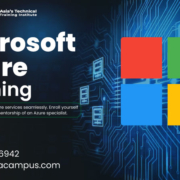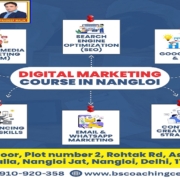How International Marine Academies Are Embracing Simulator Training?
What if your maritime training could just feel like commanding a real ship – without ever leaving the classroom?
Welcome to the new digital world – wherein the shift is redefining how the future marine officers and engineers are preparing for the real world. Today’s international marine academy is not just about textbooks or even mock drills, rather they are about cutting-edge simulators, immersive virtual reality (VR), and real-time augmented reality (AR) that offer unmatched hands-on training.
With the rising demands in maritime logistics, navigation safety and global shipping efficiency, stimulation efficiency is no longer an optional facet – it is essential!
Let’s explore how global maritime institutions are upgrading their academic models—and why students like you should take notice.
How are the academic models upgraded?
Here are some of the facets to check out –
- Digital Decks – giving rise to advanced bridge simulators
Can a simulator really teach you to steer a 100,000 ton vessel through the storm? – Yes, is the answer! What’s more? It can also help you fail safely! Today’s advanced bridge simulators are equipped with HD-displays, real time GPS data, and dynamic weather modules. These tools allow students to experience crisis situations, and ensure navigation with precision. International marine academy programs have embraced this technology to prepare you for complex situations long before you set foot on deck.
- Experience real life ship-bridge operations
- Learn collision advance, radar usage and ship handling cutting down the risk
Engine Room – Providing immersive VR for technical mastery
Engine room simulators now are found as 3D walkthroughs powered by VR headsets. All thanks to this change, you can learn turbine mechanics, emergency shutdowns and fuel system diagnostics as if you are working onboard. This immersive learning approach is now a hallmark of the best marine colleges in India, creating graduates who are absolutely job-prepared.
- Practice real-engine startups, faults and maintenance tasks
- Build confidence in technical operations, with exposure to danger like scenario (without the danger aspect)
Why Simulation-Based Academics Give You the Competitive Edge
It is crucial to note that global shipping is more competitive than ever in recent times, since now recruiters also expect practical readiness. That’s why simulation-rich syllabi are redefining career trajectories across the board. Whether you’re starting fresh or reskilling from another field, this training model improves employability. Also Augmented reality is not just a buzzword – rather it is a reality that helps navigate data, deal with cargo instructions – all directly into the learner’s field of vision.
It is due to this reason that – the best marine colleges in India are already aligning their courses with global standards – from bridge and engine to AR simulation models. Whether you are aiming for international shipping careers or even port management rules, choosing such institutions assuredly makes a massive strategic difference.
Last Note
Now that you have read the whole note – you do have a bare idea about the multiple facets associated with this domain. Are you then ready to go beyond and experience the future of maritime studies firsthand? With simulator-based learning leading the charge – you are no longer simply studying – you are at the charge of the affairs!
This is your time to learn smart, train safer, and sail into high-demand roles with confidence.








